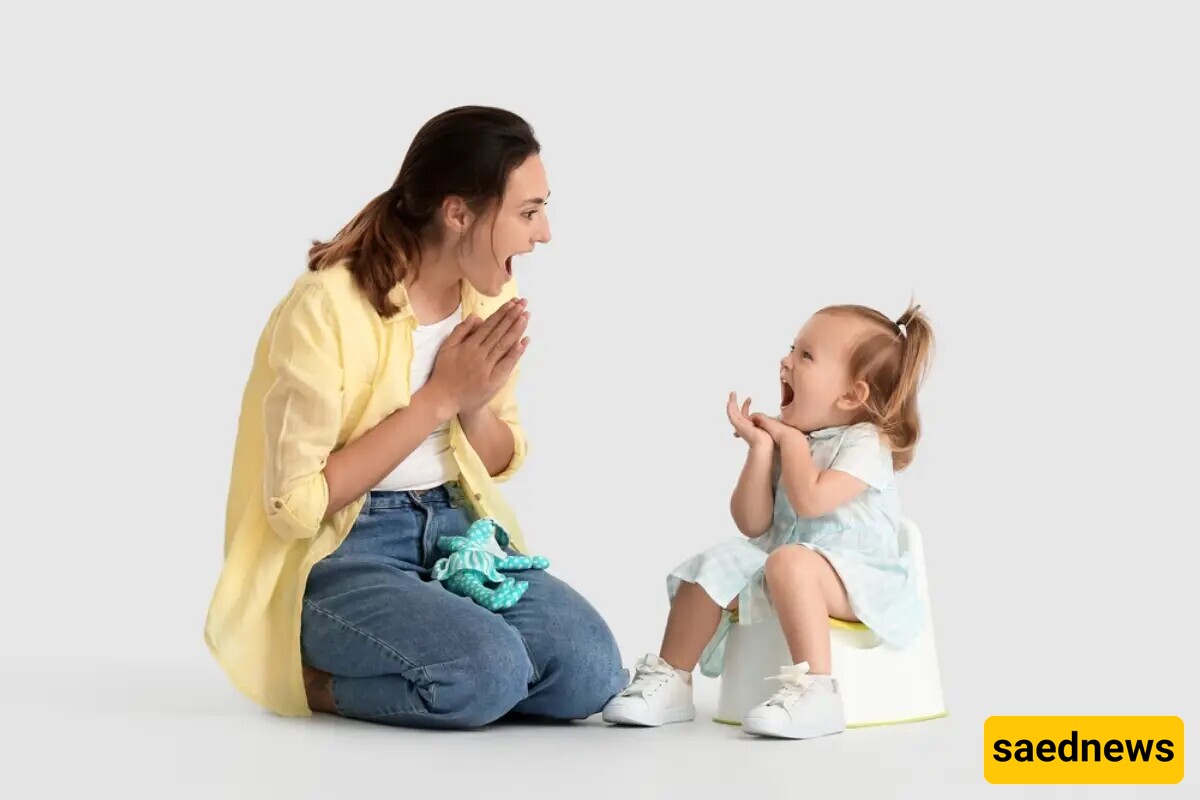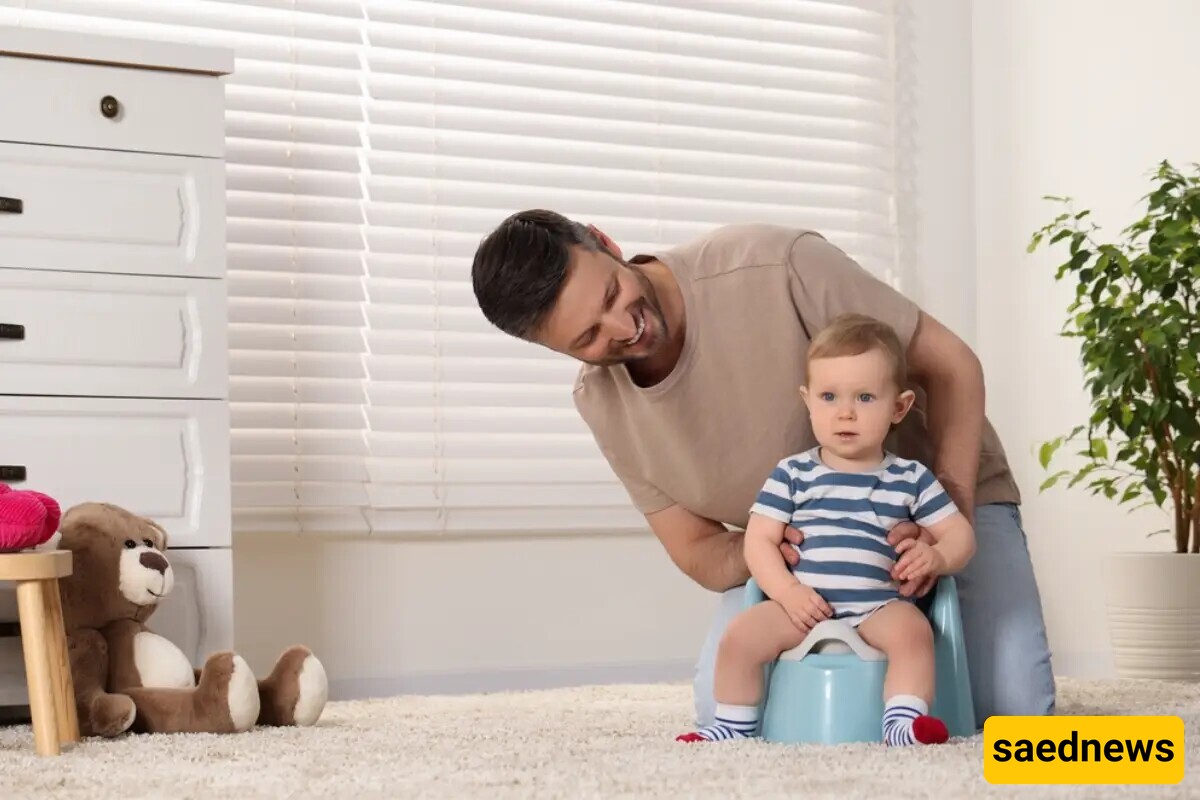It is very important to know how to behave during this sensitive period, which is very challenging for the child, so that the child stops using diapers sooner while minimizing the difficulties for parents. In this article, we will examine how to transition your child from diapers and when the appropriate time for it is.

According to the Family Magazine Service of Saed News, weaning children off diapers is one of the most challenging processes for parents. For this reason, parents start worrying about this issue long before the appropriate time arrives. Although it may seem simple, if handled incorrectly, the child may react negatively to the process.
It is very important to transition the child from diapers at the right time. Although most children are ready to say goodbye to diapers between 18 to 24 months, this is not the case for all children. However, in general, the process is usually completed before the child turns three years old. Comparing a child to their peers in this regard is a mistake and can have the opposite effect.
Even if you are using the best diapers, you can tell if your child is ready to transition based on the following signs:
The child understands the difference between urine and feces.
The child notices before urinating or defecating.
The child can hold urine for at least two hours, indicating stronger bladder muscles.
The child informs you before urinating.
The child can pull their pants up and down independently.
The child has a regular and predictable urination and defecation schedule.
The child shows interest in going to the bathroom.
The child walks comfortably and moves easily.
If your child exhibits these eight signs, it may be the right time to start diaper training.
The process of weaning a child off diapers can sometimes take time. As a responsible parent, you need to be patient and allow your child to prepare for this new phase of life. Keep in mind that your child has been accustomed to diapers from birth, and accepting this change can be difficult. Below are some methods to help you navigate this transition successfully:
One effective way to begin is by familiarizing your child with the potty chair. To make the potty chair more appealing, use creative ideas such as bringing your child's favorite books into the bathroom or placing the potty chair in a familiar environment, like their room, to make them feel more comfortable.

While your child is sitting on the potty, read them a book or tell a story about how all people and animals need to use the toilet. You can also encourage them by using their toys, pretending that their dolls or stuffed animals also need to go to the potty. Adding creativity to the process can make a significant difference, and soon your child will respond positively to using the potty.
If you notice that your child can keep their diaper dry for at least two hours or has regular bowel movements, it may be time to start the transition. When beginning this process, ensure your child can walk to the bathroom and pull their pants up and down easily.
Also, check if your child prefers wearing underwear instead of diapers. If they feel uncomfortable when their diaper is wet or dirty and express their discomfort through crying or speech, this indicates that they are ready. At this stage, you can use training pants to give them the feeling of wearing underwear while easing the transition.
One simple but effective method is to move the potty chair to a different location in the house. Some children may feel anxious about using the bathroom, so placing the potty in the living room or their bedroom can help them feel more comfortable.
After some time, gradually move the potty back to the bathroom. Also, ensure that when your child sits on the potty, their feet can touch the ground. If necessary, place a small stool under their feet to provide stability and reduce stress.
Make sure you choose a stress-free period to start diaper training. Even if your child shows signs of readiness, postpone the process until the household environment is calm. For example, transitioning during a time when the father is off work can be beneficial, as you won’t be handling the process alone, and the child will feel more secure.
If a new baby has recently been born, wait until your child has adjusted to the change before starting the process. Additionally, parents need to remain calm and patient during this period to support the child effectively.
Avoid setting a strict deadline for the transition. Instead, progress gradually according to your child’s pace. Forcing a child to stop using diapers within three days, for example, can create unnecessary pressure and stress.
To avoid making the child feel uncomfortable, do not remove all their clothes while taking them to the potty. Instead, establish a consistent schedule and routine for bathroom visits.
Make sure to take your child to the potty regularly throughout the day. Setting specific times, such as every two hours, can be more effective. For instance, place your child on the potty after waking up, before going out, before naps, and before bedtime.
Encourage your child to pull down their pants and sit on the potty for a few minutes, even if they don’t feel the need to go. To keep them engaged, you can distract them with a song or conversation.
After a few minutes, even if they don’t use the potty, wash their hands and continue with the routine.
If your child has an accident, avoid scolding or punishing them, as this is a natural part of the learning process. Negative reactions can disrupt their progress.
Instead, encourage and reward your child when they successfully use the potty. Small rewards like their favorite snack or a sticker chart can be motivating. Training pants can also help during this stage. When choosing training pants, consider trusted brands such as Molfix, Prima, or other reputable options.
During the training process, emphasize good hygiene habits such as washing hands with soap and water. Teach your child that this is an essential part of staying healthy.
To make handwashing more enjoyable, use colorful soaps or sing songs while washing hands.
This article provided useful and practical information on how to transition your child from diapers. By following these strategies, you can make the process smoother and less stressful. However, keep in mind that success largely depends on your patience and persistence.

